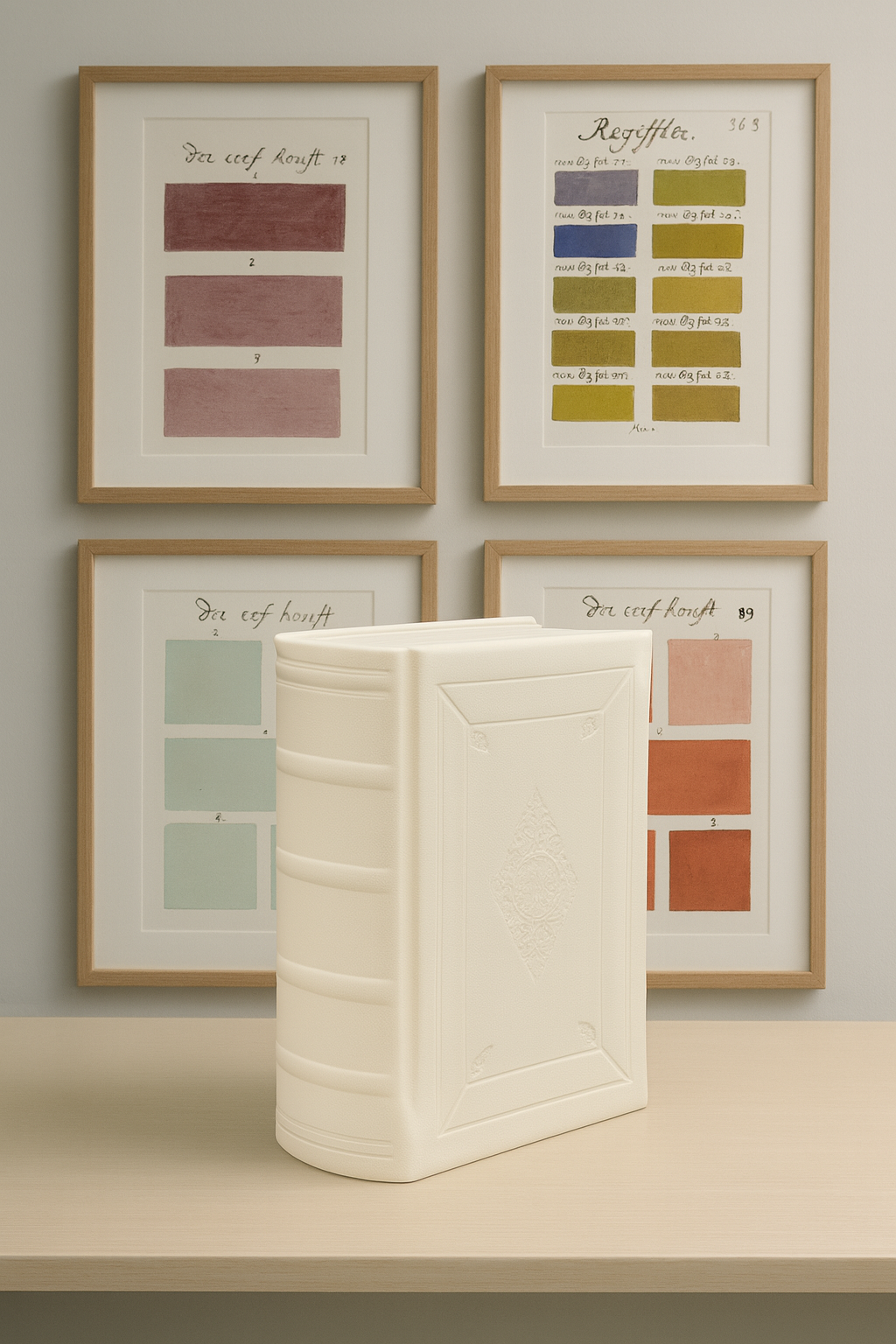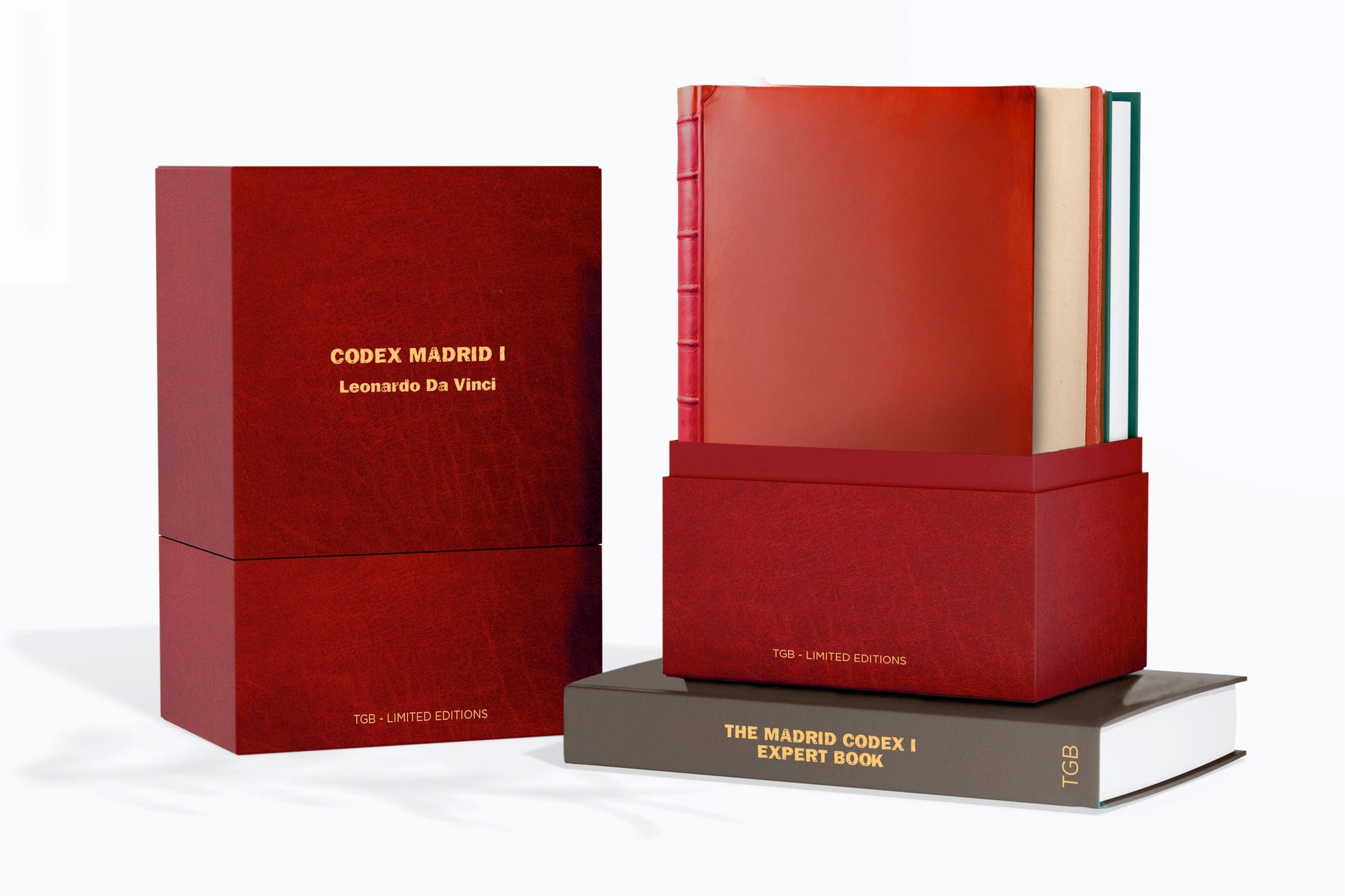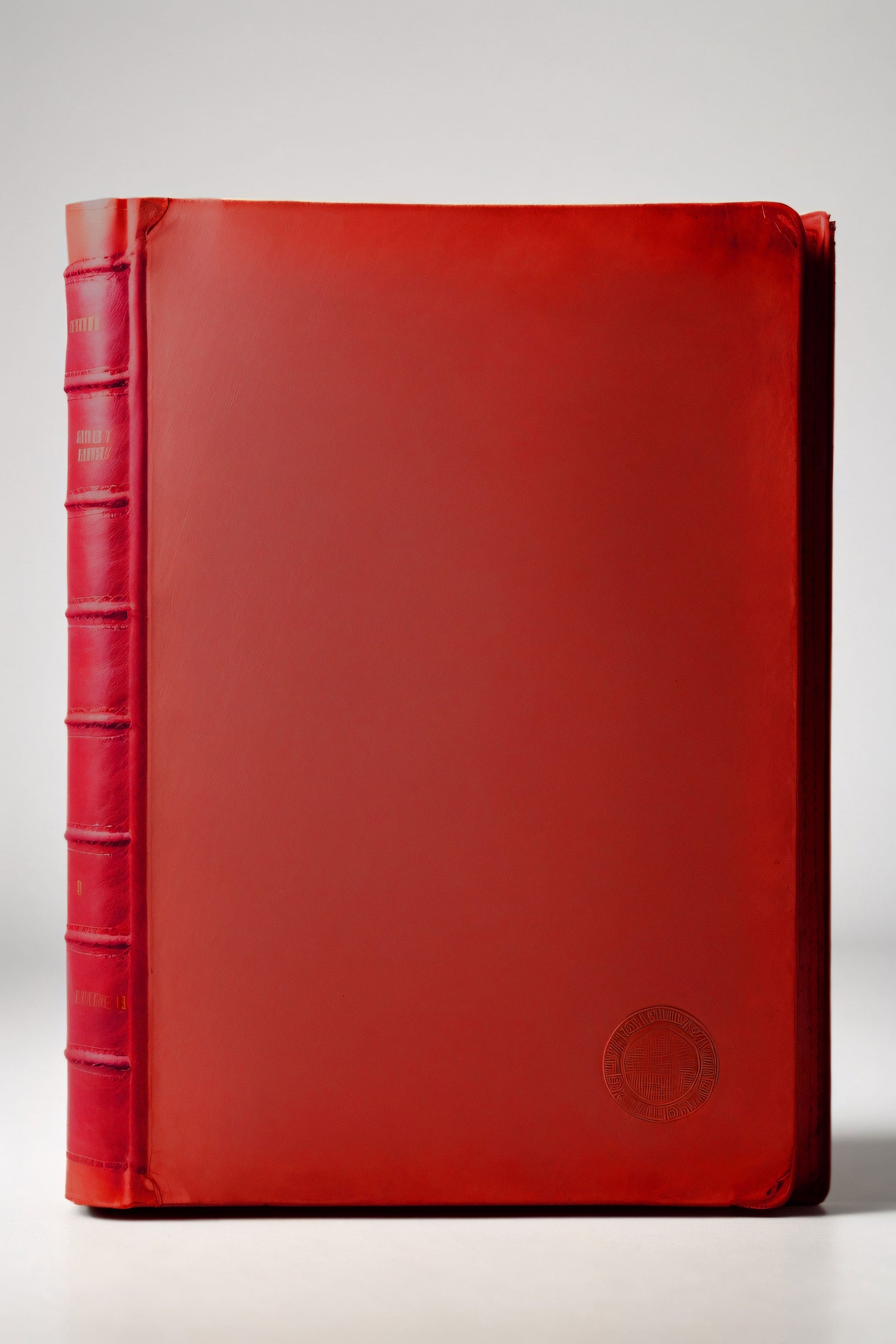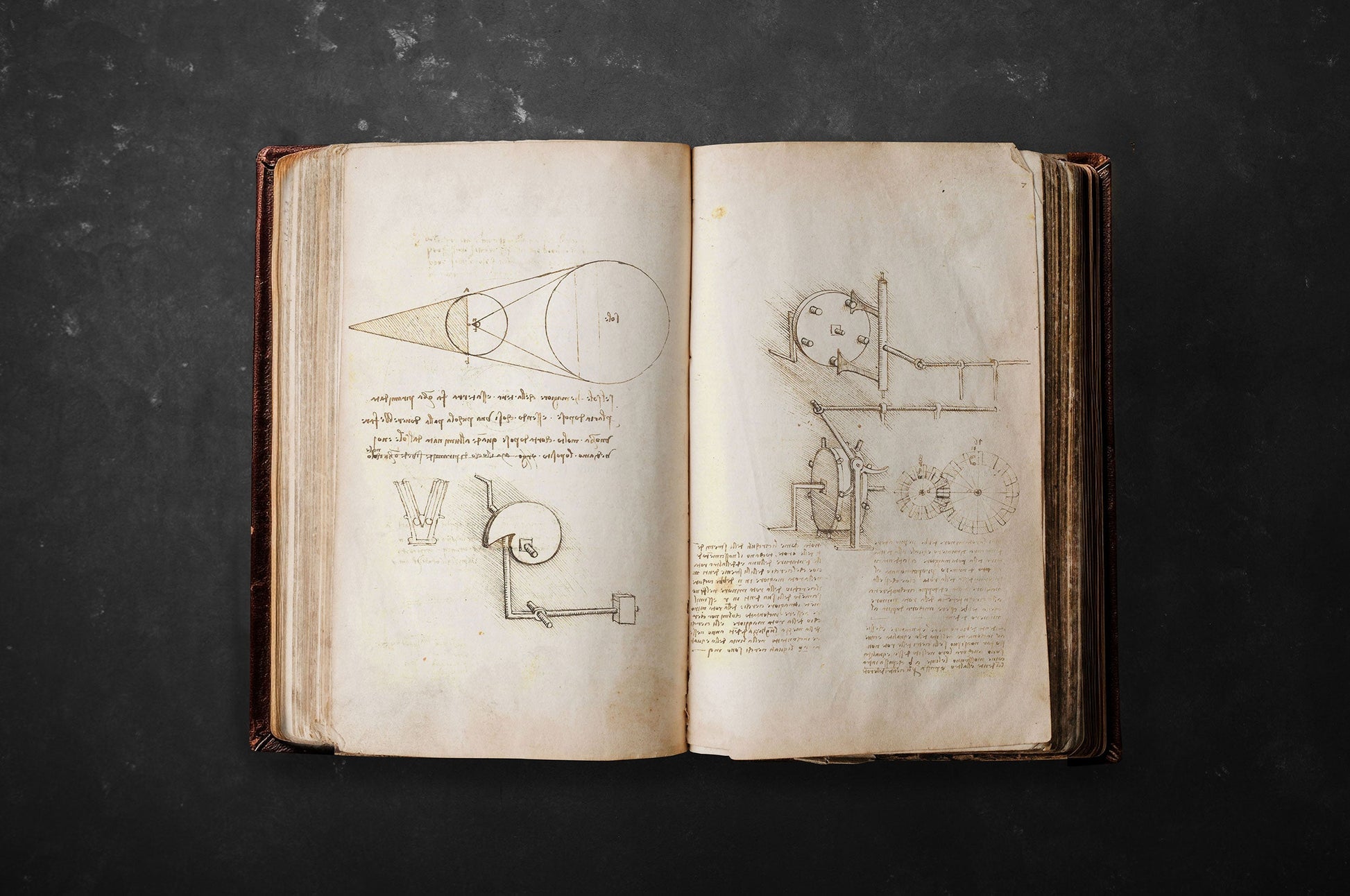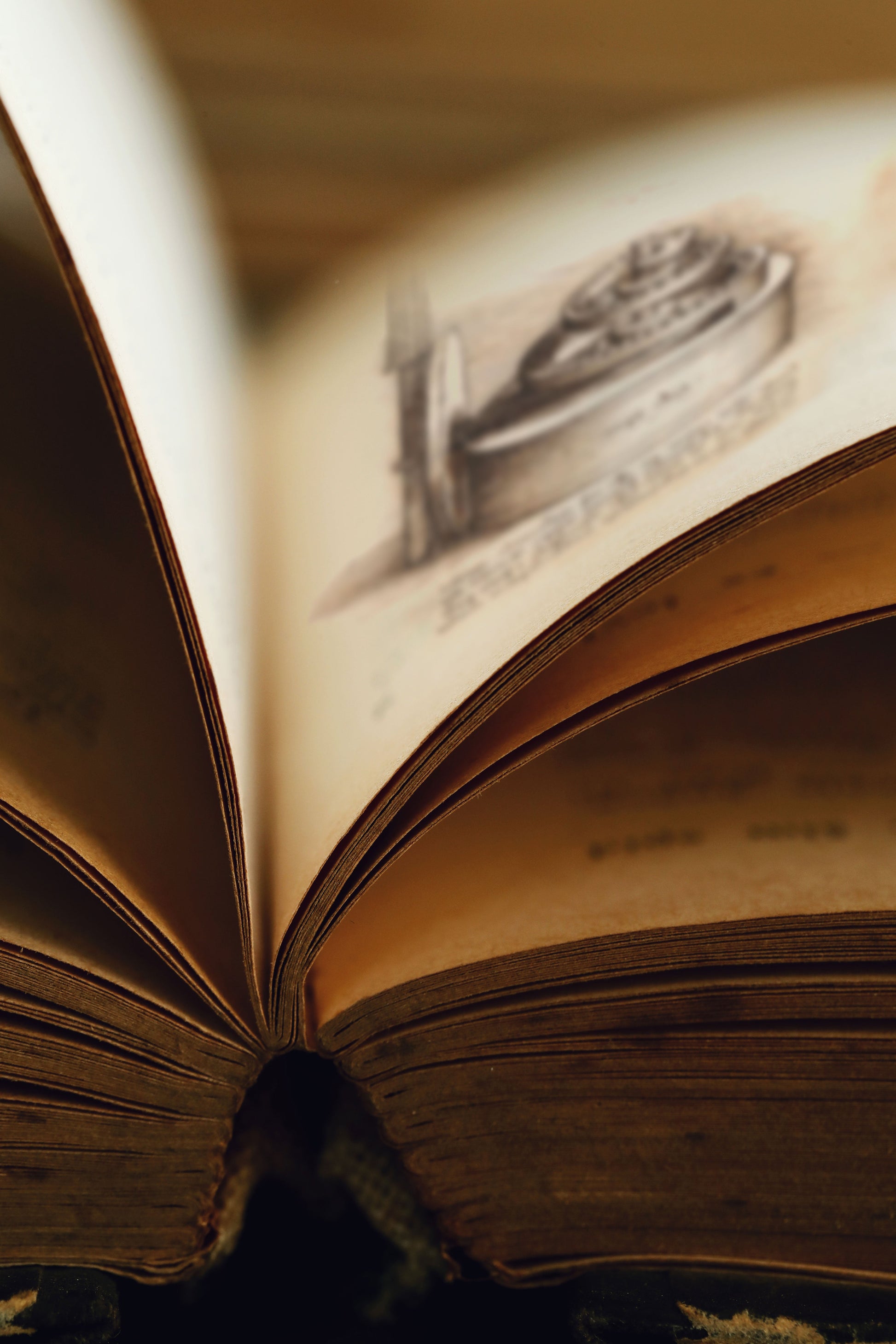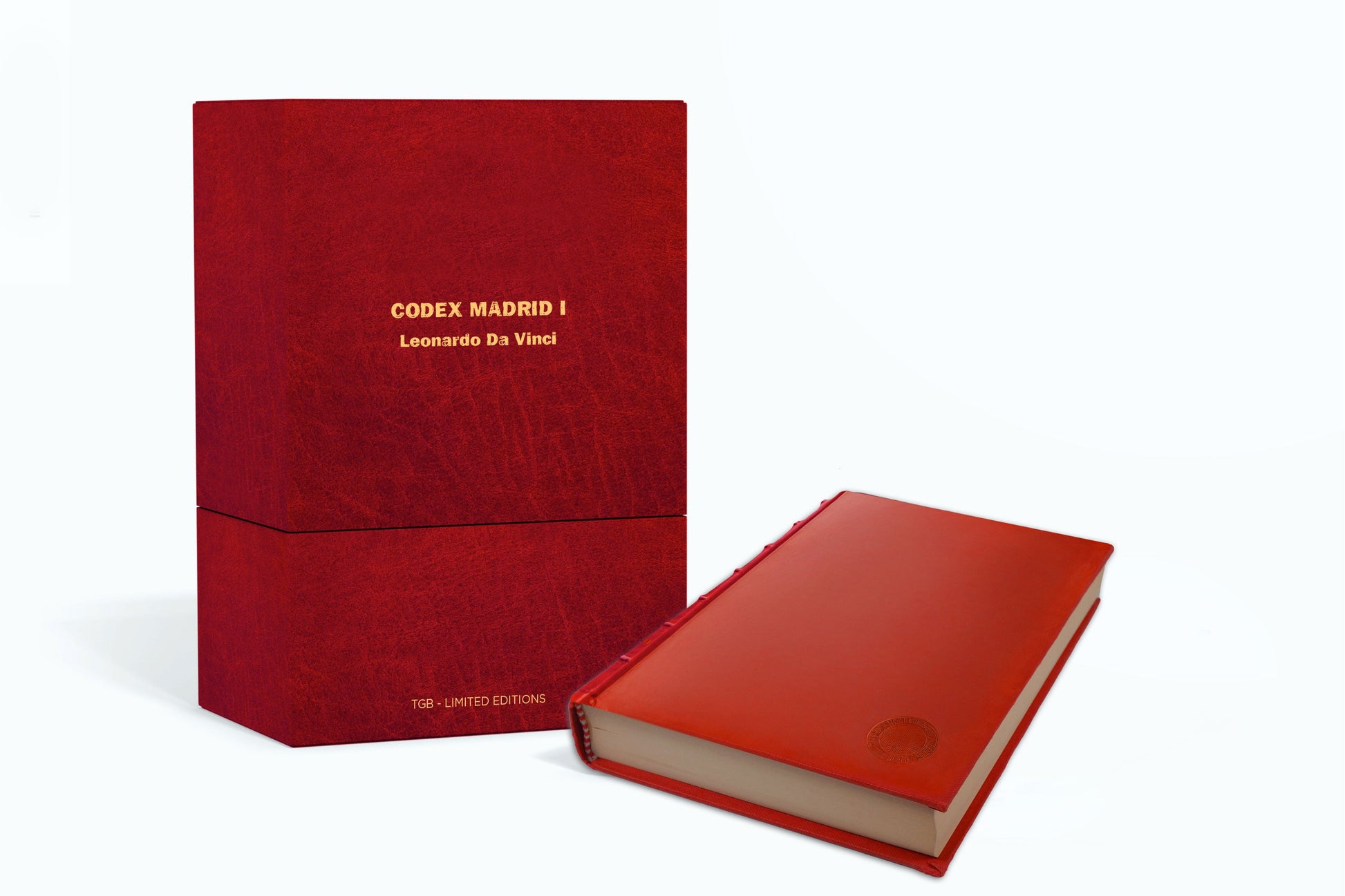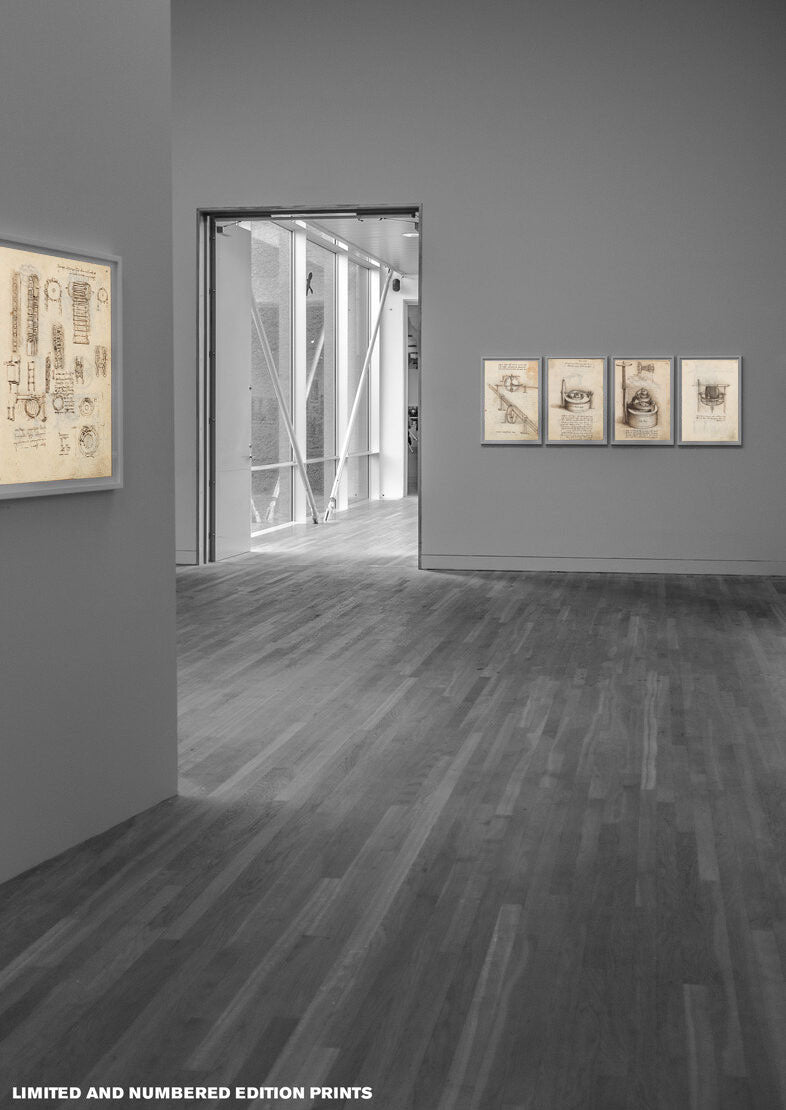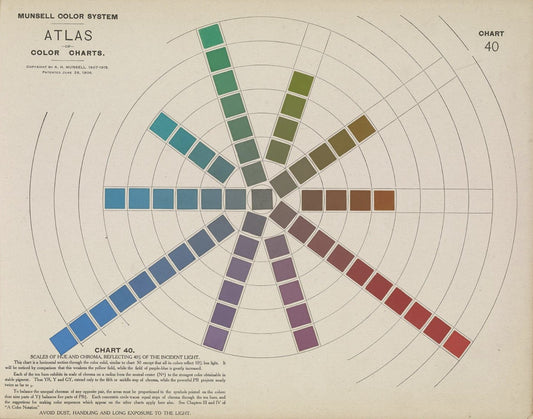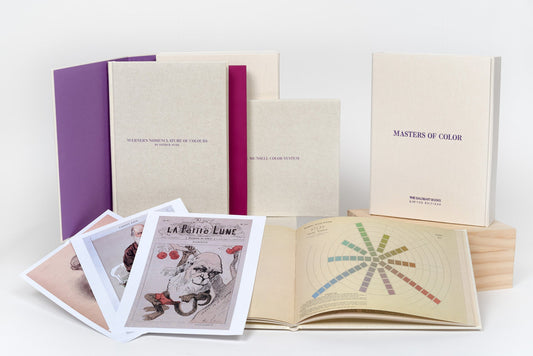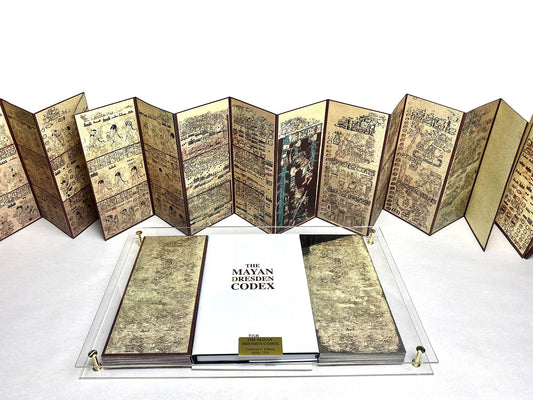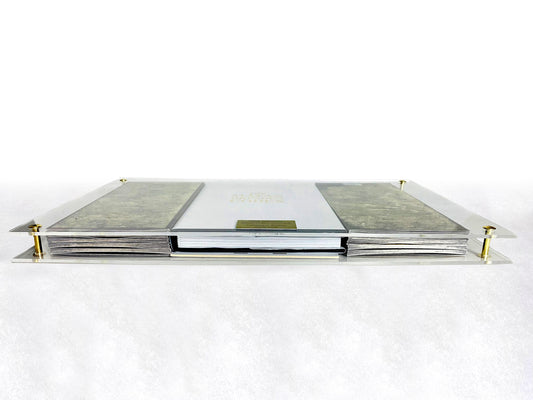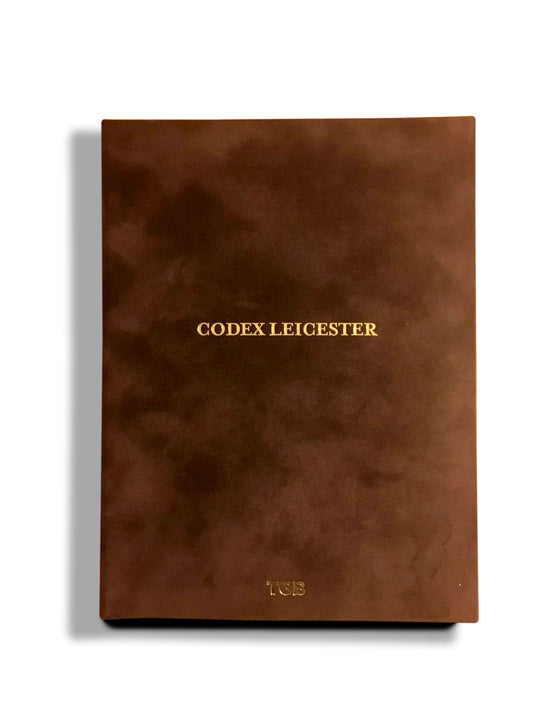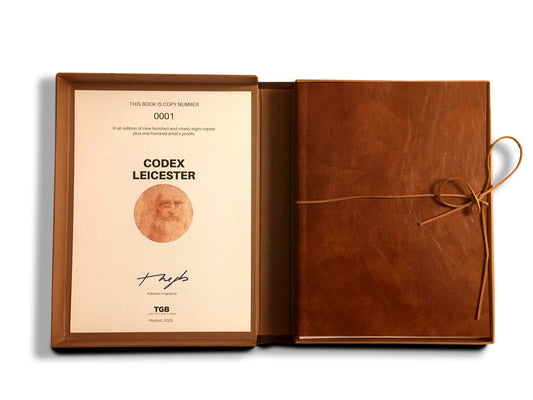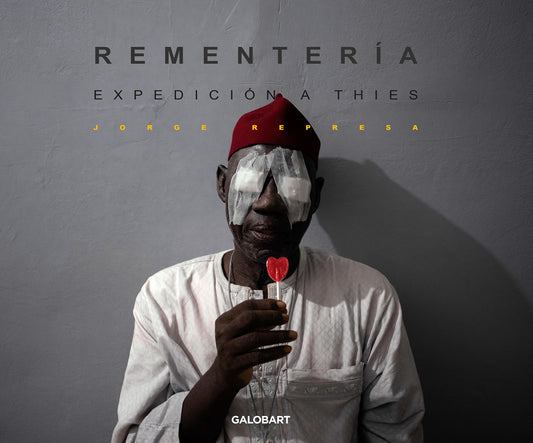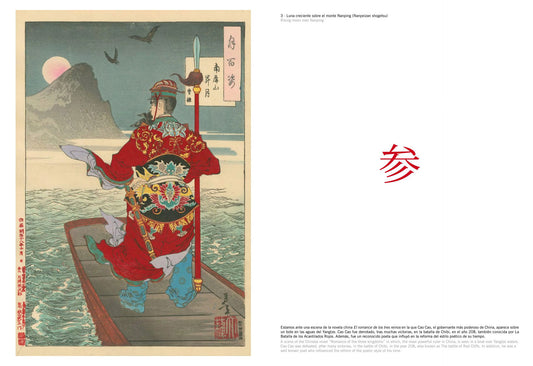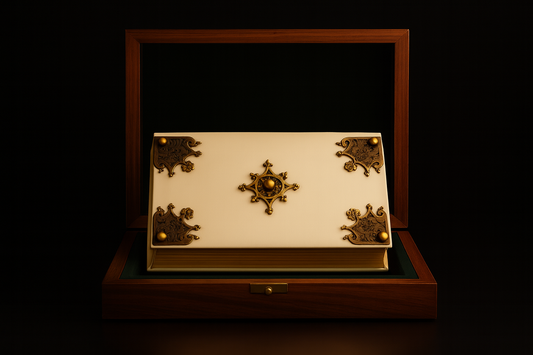CODEX MADRID I (LEONARDO DA VINCI)
COLLECTOR'S EDITION
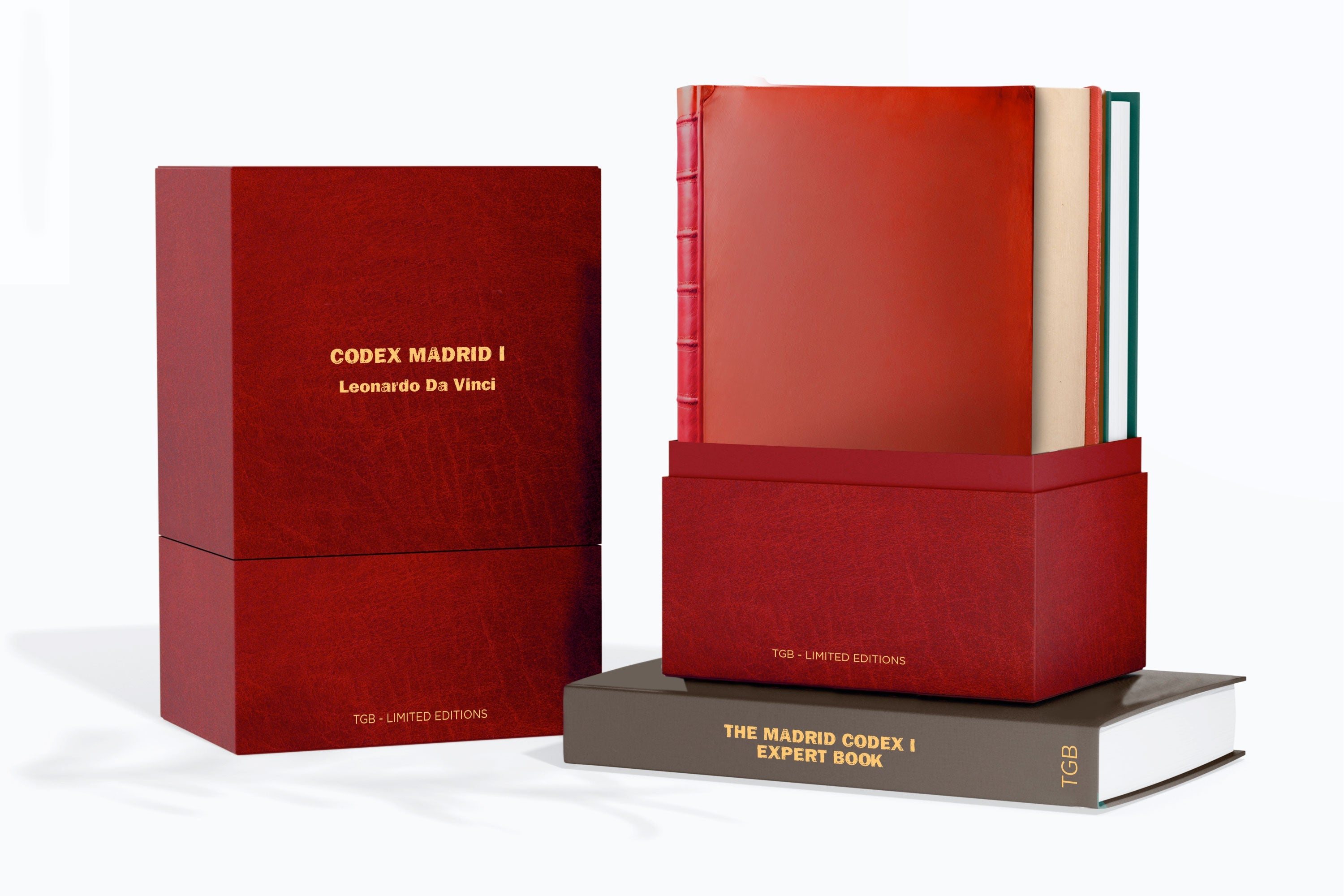
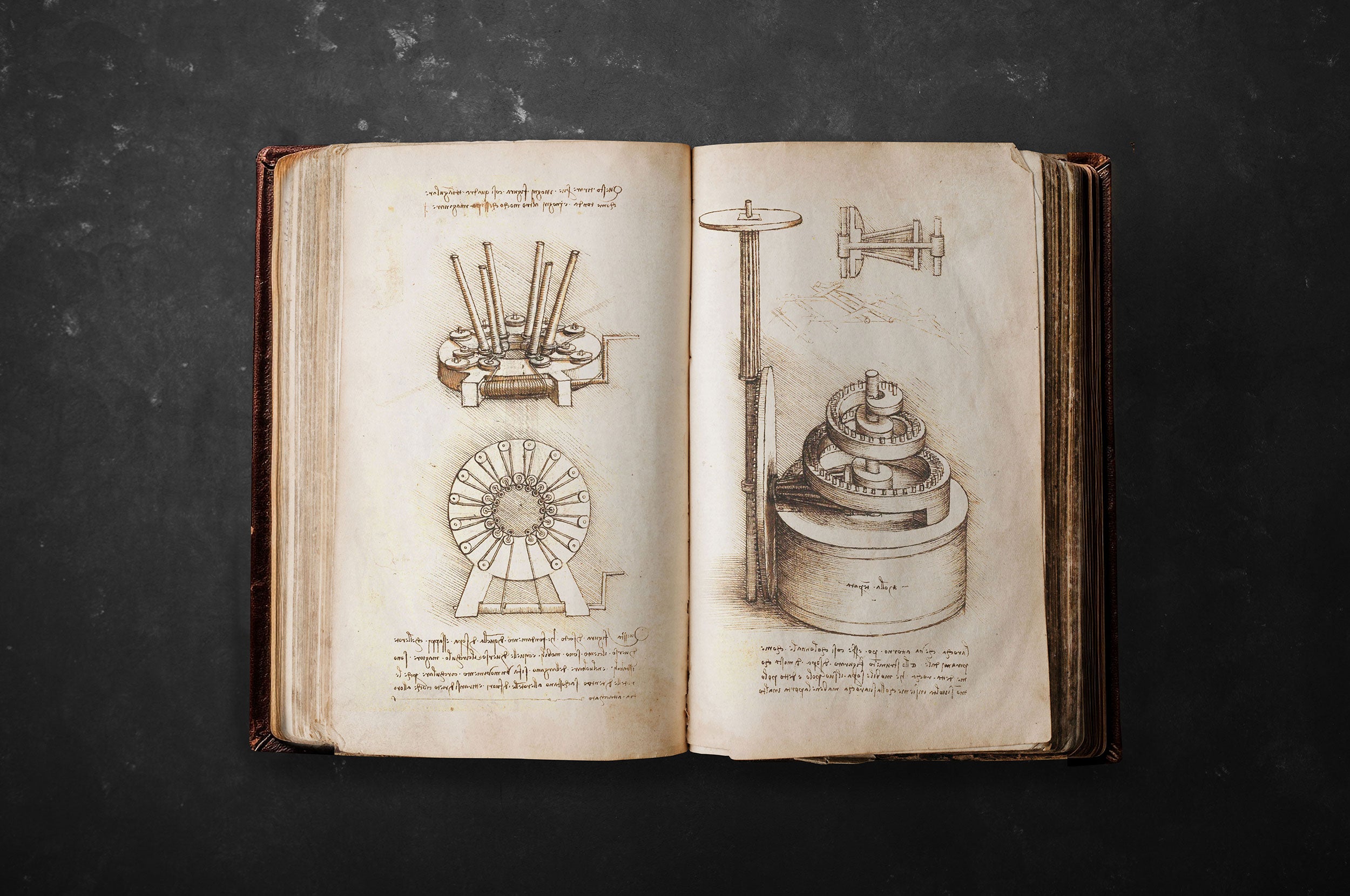

Codex Madrid I (Leonardo Da Vinci)
Codex Madrid I (Leonardo Da Vinci)
COLLECTOR'S EDITION
Couldn't load pickup availability
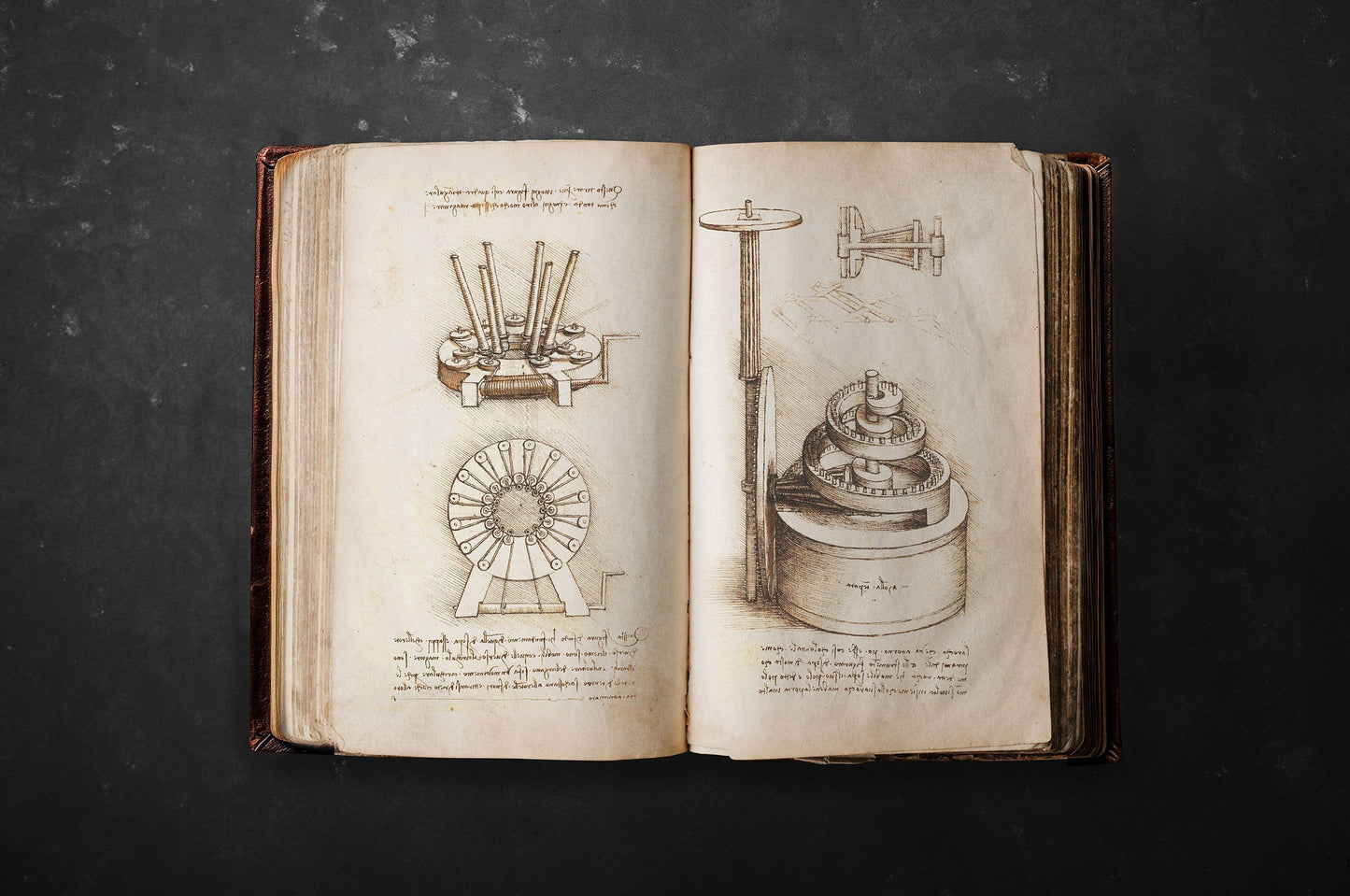
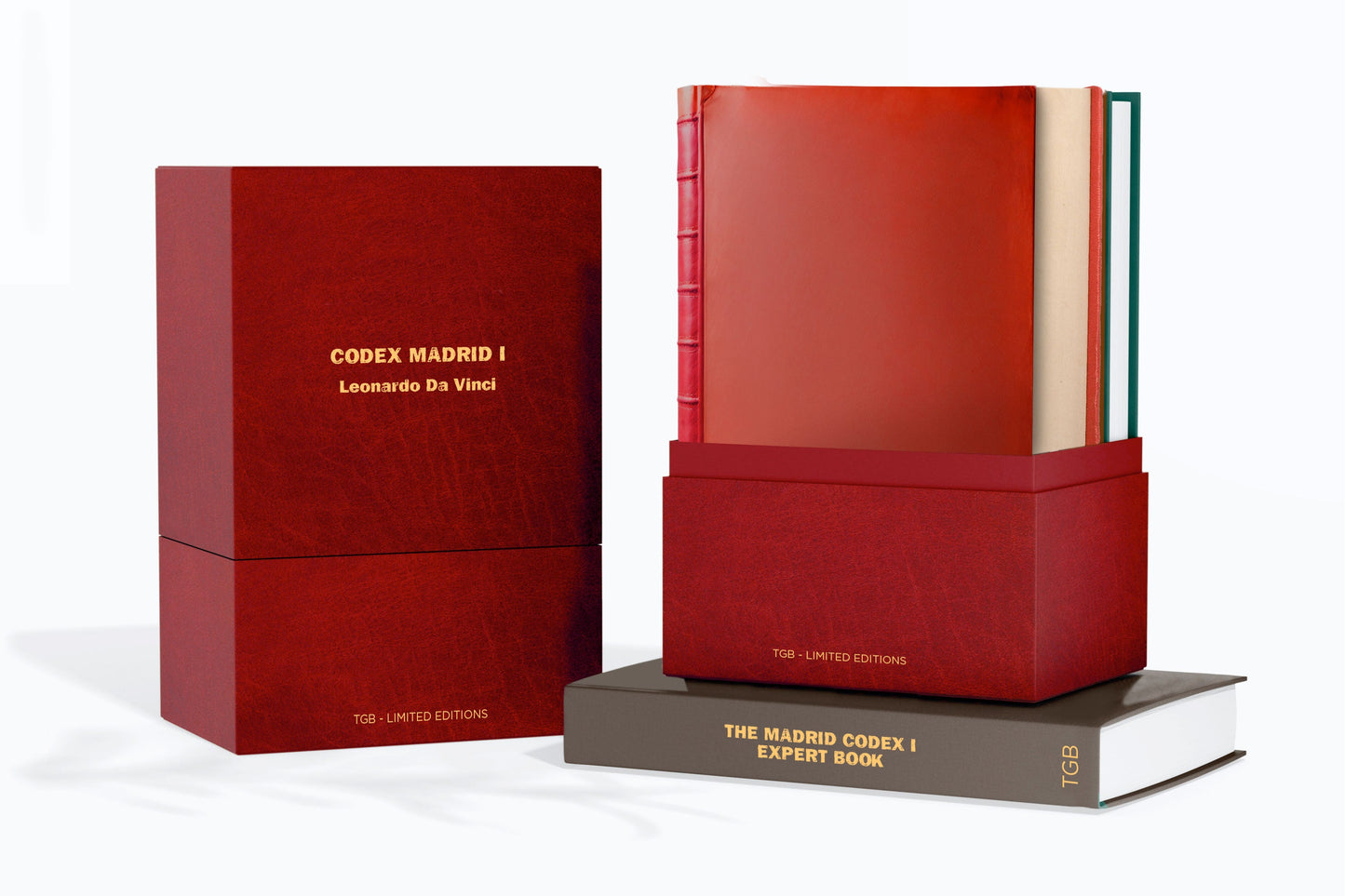
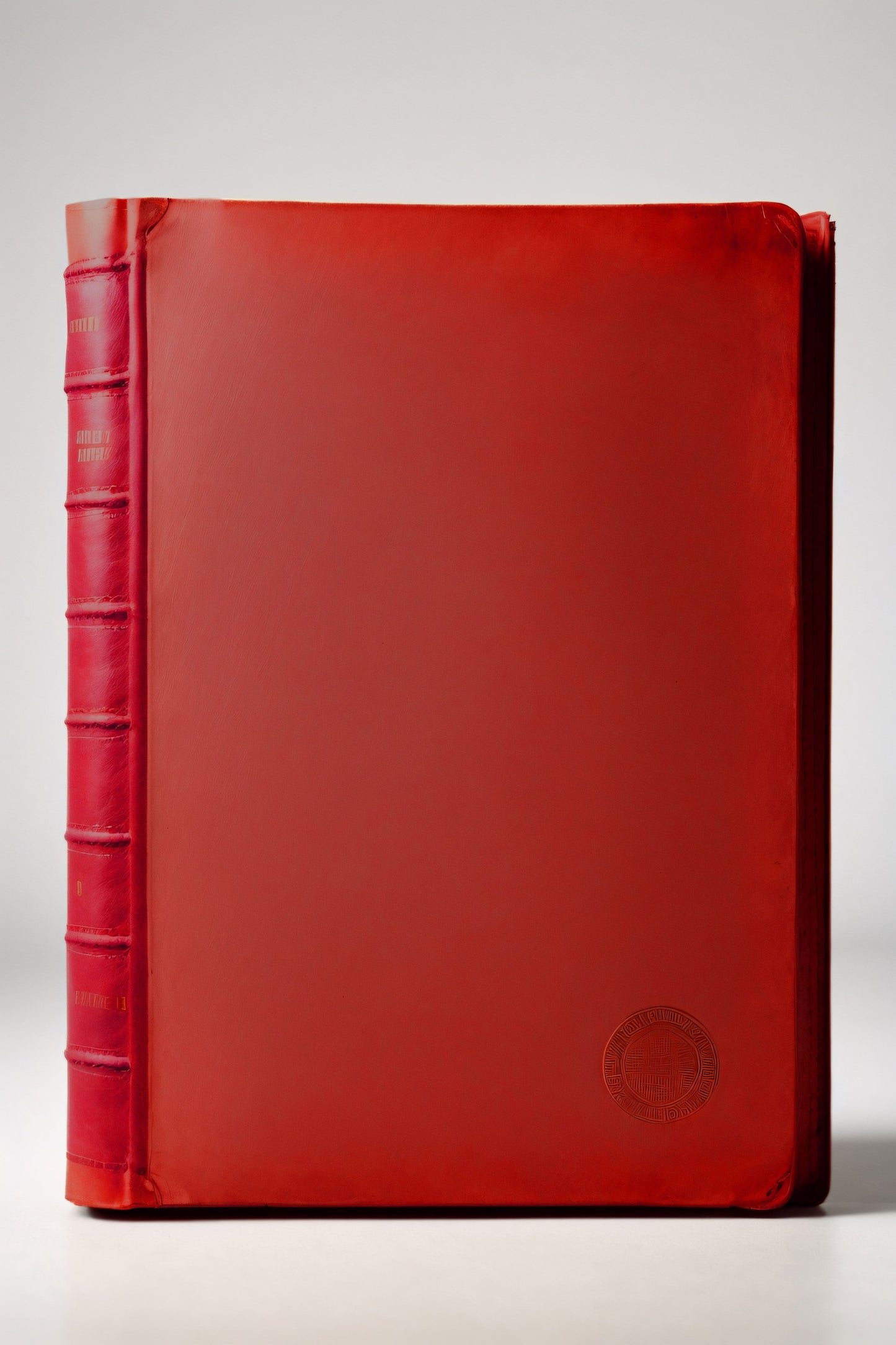
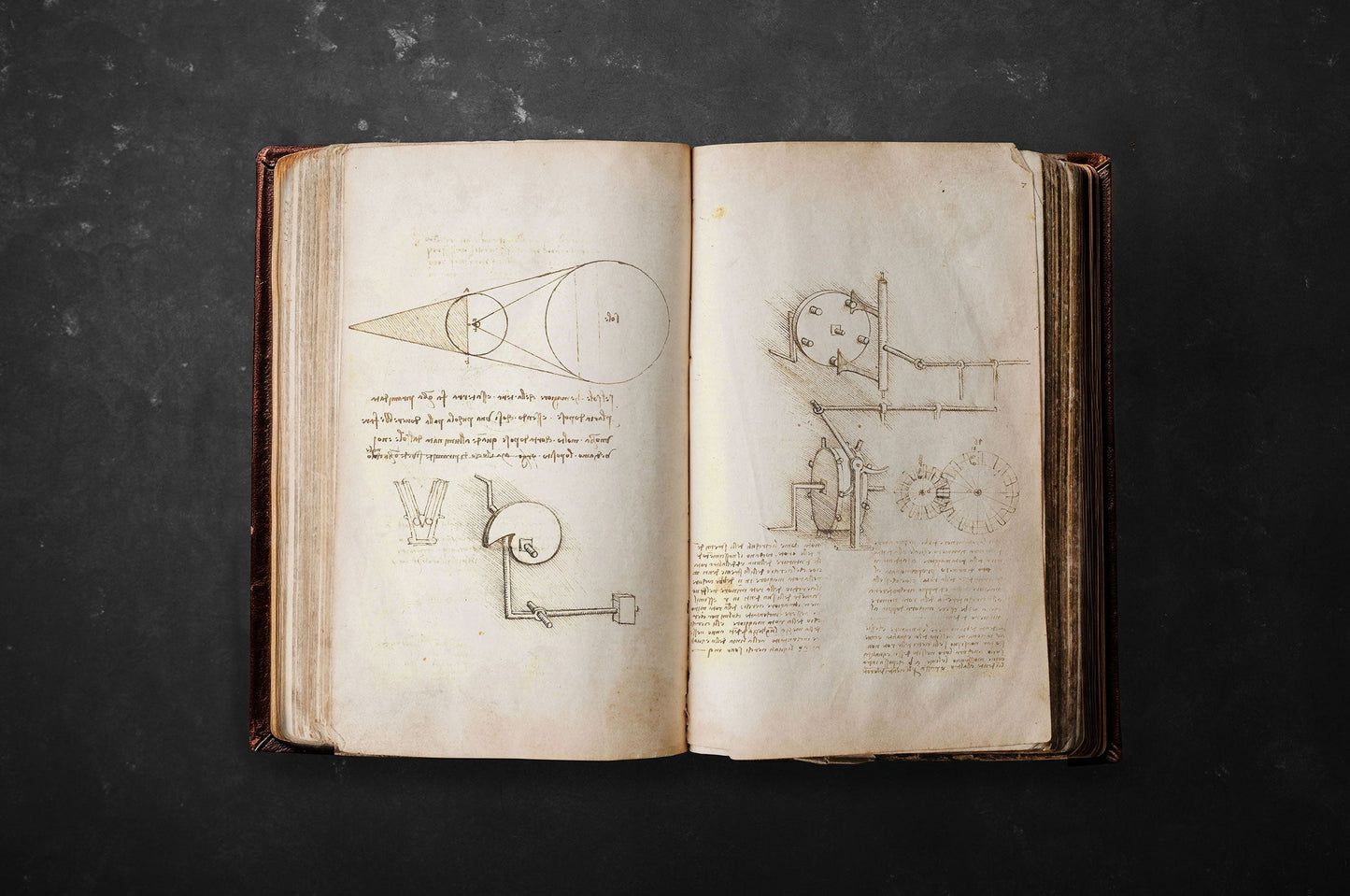
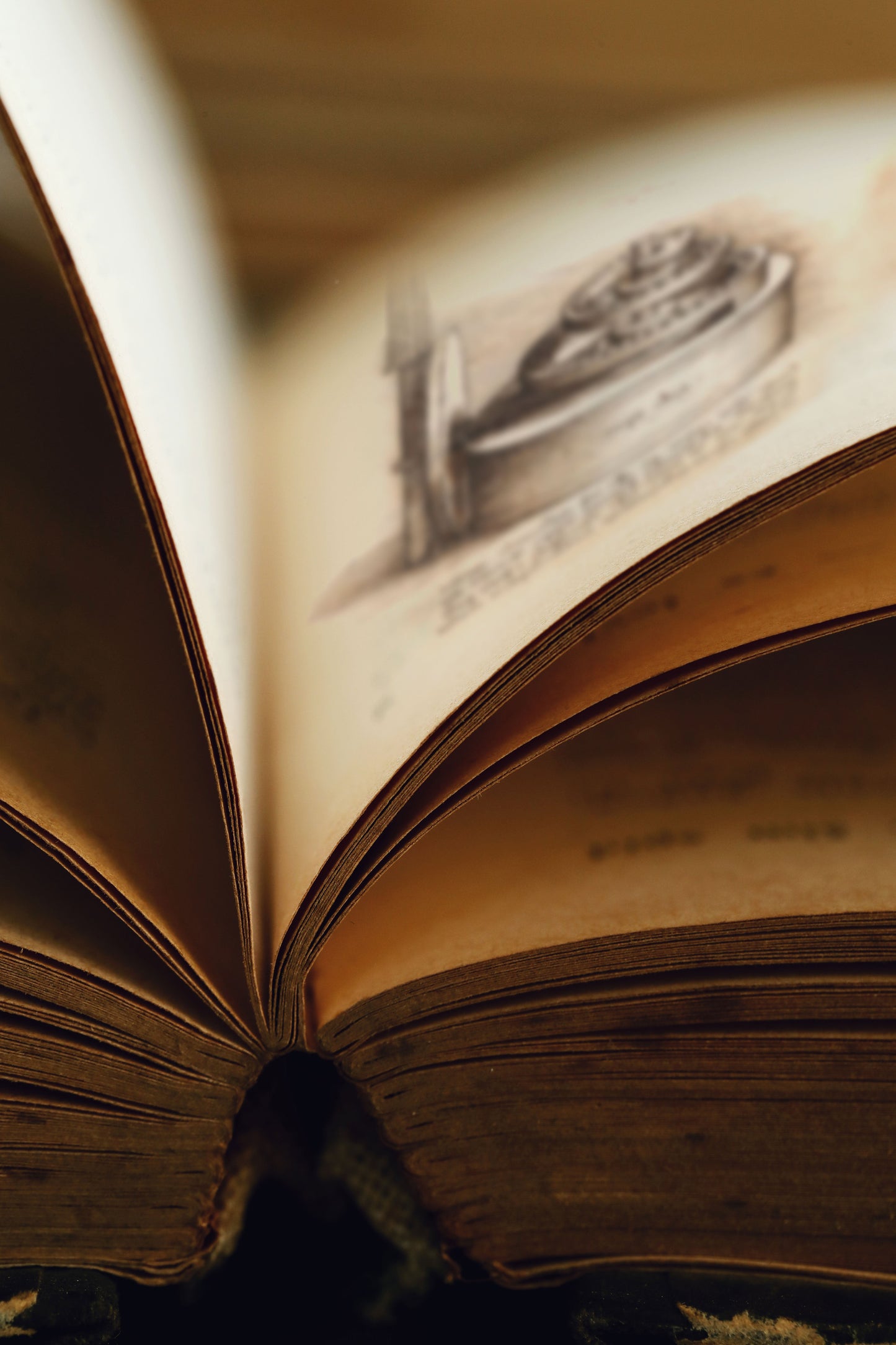
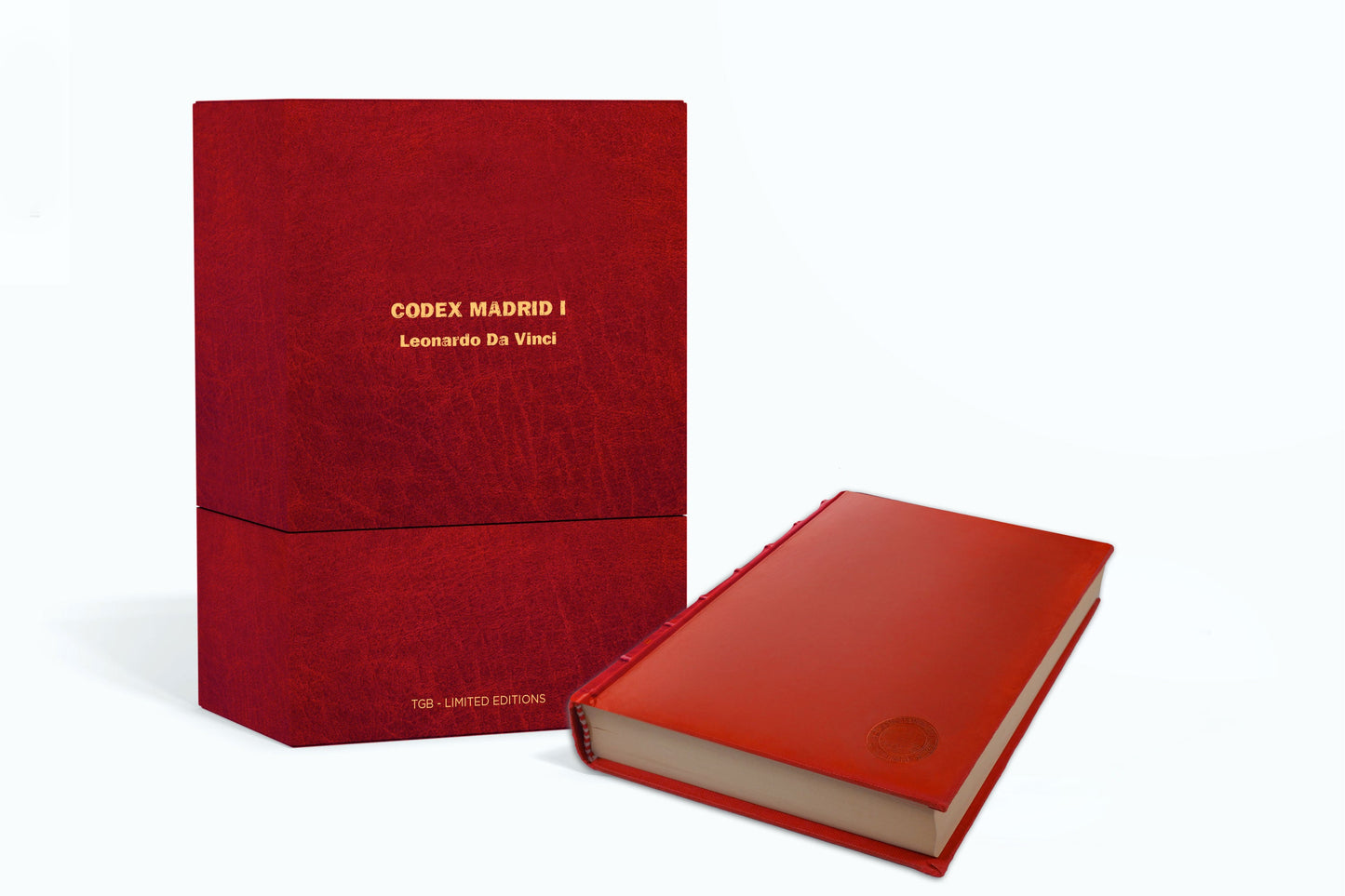



CODEX MADRID I - COLLECTOR'S EDITION -
*A facsimile edition of the original: only 999 copies
"Treatise on Statics and Mechanics", 384 pages in its original format of 215 x 145 mm.
- Hand-bound with spine ribs.
(vegan alternative to leather)
- Art paper with serrated edges that reproduces the original.
- Exact reproduction of the original document (length, color and size).
*Ten numbered art prints for collecting or framing
* A book with expert commentary on the codices and the life and work of Leonardo.
* An elegant collector's edition box numbered from 001 to 999.
SOLD OUT
350 euros.

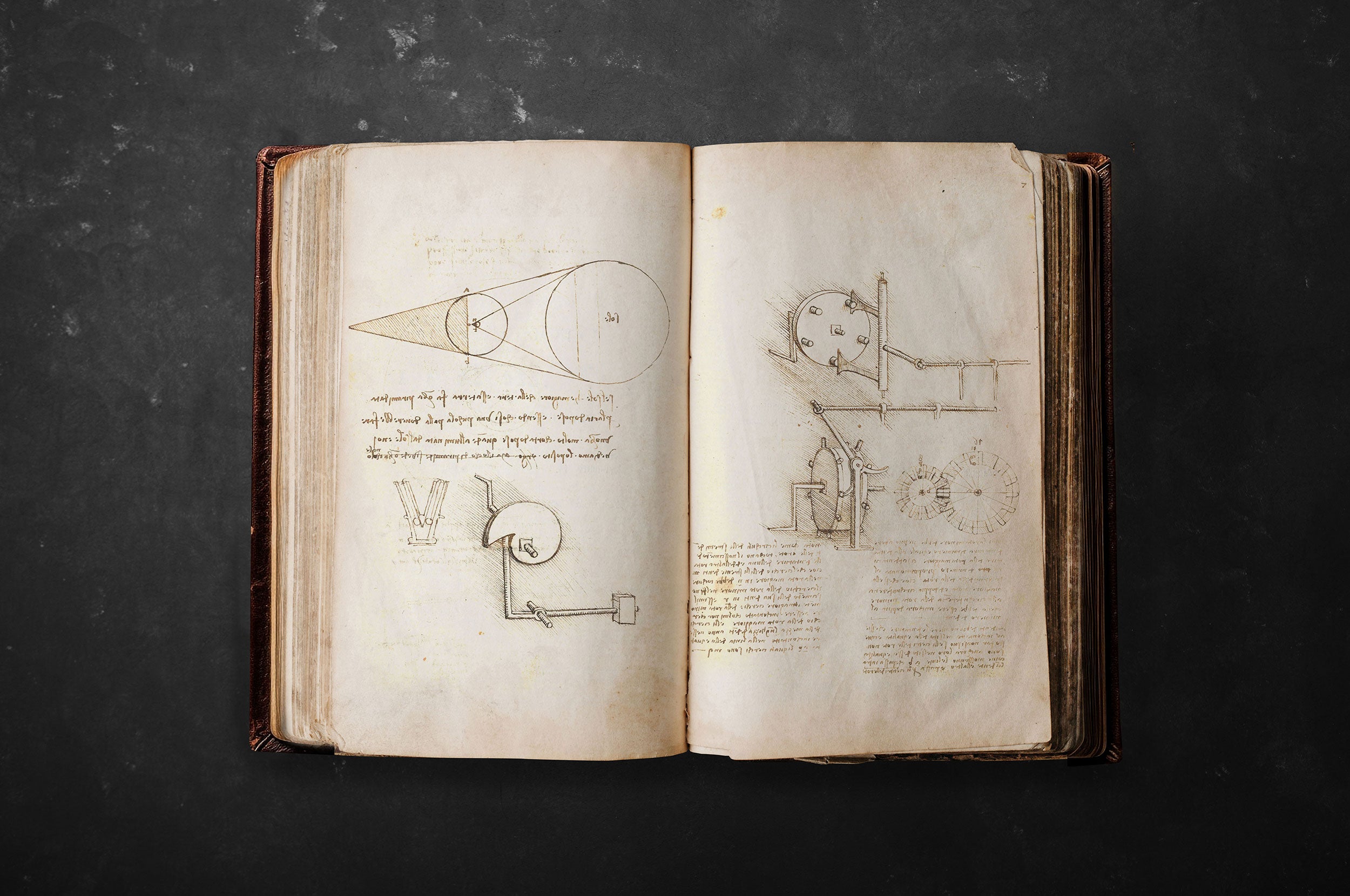



The Madrid I Codex (1490-1505)
1- The Madrid I Codex , also known as the "Treatise on Statics and Mechanics" or "Leonardo da Vinci's Madrid Codex," is an important manuscript written by the famous Renaissance polymath Leonardo da Vinci . This codex is part of the Leonardo da Vinci manuscript collection and is kept at the National Library of Spain in Madrid.
The Madrid Codex I is a collection of notes and drawings that Leonardo da Vinci made between 1490 and 1505 , focusing primarily on various aspects of statics and mechanics. It contains numerous diagrams and detailed drawings that explore mechanical concepts, such as levers, pulleys, gears, and simple machines. It also delves into topics related to statics, such as the balance of forces and the strength of materials, as well as notes on optics and astronomy.
We find, for example, notes for a water clock and also a design for a hang glider that, as would later be shown, flew.
The cover reads:
Treatise on Statics and Mechanics, in Italian, written in 1493, as seen on folio 11. It contains 191 folios and is written backwards. It contains 191 folios and is written backwards.
This codex is a valuable source of information on Leonardo da Vinci's studies in the fields of engineering and mechanics. It offers a unique insight into his scientific and artistic approaches and provides insight into how he sought to understand the workings of machines and apply this knowledge to the construction of practical devices. As the title indicates, it is written in Leonardo's characteristic inverted handwriting.
Leonardo da Vinci's Madrid I Codex is one of the few surviving notebooks and codices and is considered a treasure in the history of science and technology . His work influenced numerous fields, from engineering to anatomy, and his legacy endures as one of the cornerstones of Italian Renaissance scientific thought and research.

History and journey of the Codices
The Codices were brought to Spain by Pompeo Leoni, sculptor to Philip II. After several changes of ownership, they passed to the Library of the Monastery of El Escorial, finally passing to the Royal Library, where they remained lost for 150 years.
These manuscripts are of great importance in Leonardo's work, as they contain about 15% of Leonardo's notes referenced today, but they are also important for the quality and relevance of the topics they contain, which represent one of the most important engineering treatises of the period.
Upon Leonardo's death, they passed to his friend Francesco Melzi. Some fifty years later, Pompeo Leoni, a sculptor in the service of Philip II, acquired them from his son Orazio and took them with him to Spain.1 Upon Leoni's death in 1608, the manuscripts passed into the hands of Juan de Espina, a friend of Francisco de Quevedo y Villegas, who, according to contemporary gossip, was "a gentleman who lives alone in a mansion in Madrid, and whose servants are wooden automata."
The Prince of Wales (Charles), during his visit to Madrid in 1623, became interested in the manuscripts, and Espina freed himself from the obligation by presenting them to the King. The Codices arrived at the Royal Library in 1712, where for various reasons they remained lost until 1964, according to Martín Abad "due to the transfer of the royal library to four different locations, a fatal confusion of call numbers, and the aura of Leonardo da Vinci, which blinded many to link his fame to that of the genius."
A treasure lost 150 years ago
It was a researcher at the University of Massachusetts, an expert in medieval Castilian literature, who discovered them by chance, in 1964, when he came across two codices written by Leonardo Da Vinci in his own handwriting.
They had been lost in the archives of the National Library of Spain. An error by the chief librarian in coding their numbering caused them to be lost for 150 years, until they were discovered by the American Jules Piccus, who was in the Library searching for medieval songbooks.
The Madrid I Codex is a treatise on mechanics, composed of 12 booklets of 16 pages each.
The Madrid I Codex has similarities with the Codex Atlanticus, in the Ambrosian Library of Milan: a series of elements (weights, gears, springs, clockworks, scales, screws, hinges, etc.) are outlined in the Codex Atlanticus, and finally developed in the Madrid I Codex, with drawings of great detail and quality.
Bound collections of Leonardo's work, notebooks and loose notes are preserved... the Madrid Codex being a bound collection.
Leonardo was at the same time a painter, anatomist, architect, paleontologist, botanist, writer, sculptor, philosopher, engineer, inventor, musician, poet and urban planner.
Leonardo's death marked the beginning of the dispersal and loss of two-thirds of the fifty thousand original multidisciplinary documents written in Old Tuscan and codified by him. Every manuscript, page, sketch, drawing, text, and note was fully considered a work of art. Only about thirteen thousand documents remain, most of which are preserved in the Vatican City archives.
This Madrid Codex I is one of his most important works.
Customer reviews
-
⭑⭑⭑⭑⭑
Hi Alejandra. I just wanted to make sure you received my thanks for the Codex. Beautiful book and well worth the wait. Thanks again. Best regards.
Mark Jackson
Taos, New Mexico, USA -
⭑⭑⭑⭑⭑
This is the third product I've purchased from GALOBART, and each one has been meticulously crafted. I'm very impressed with the materials and craftsmanship, as well as the excellent way GALOBART communicates with customers. I look forward to the launch of future products.
Michael Winograd
Keene, New Hampshire, USA -
⭑⭑⭑⭑⭑
Hi I received this today it is awesome I am very happy with it Great job.
Michael Richardson
Bradley Stoke. Bristol board. United Kingdom


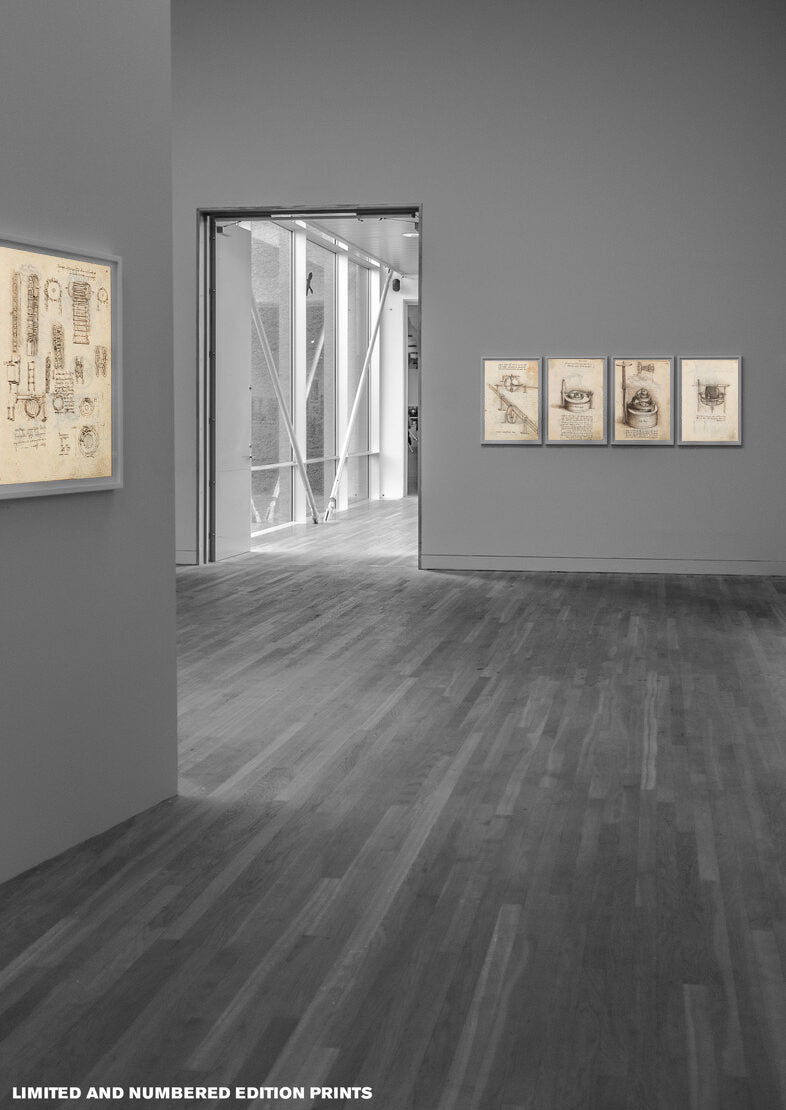
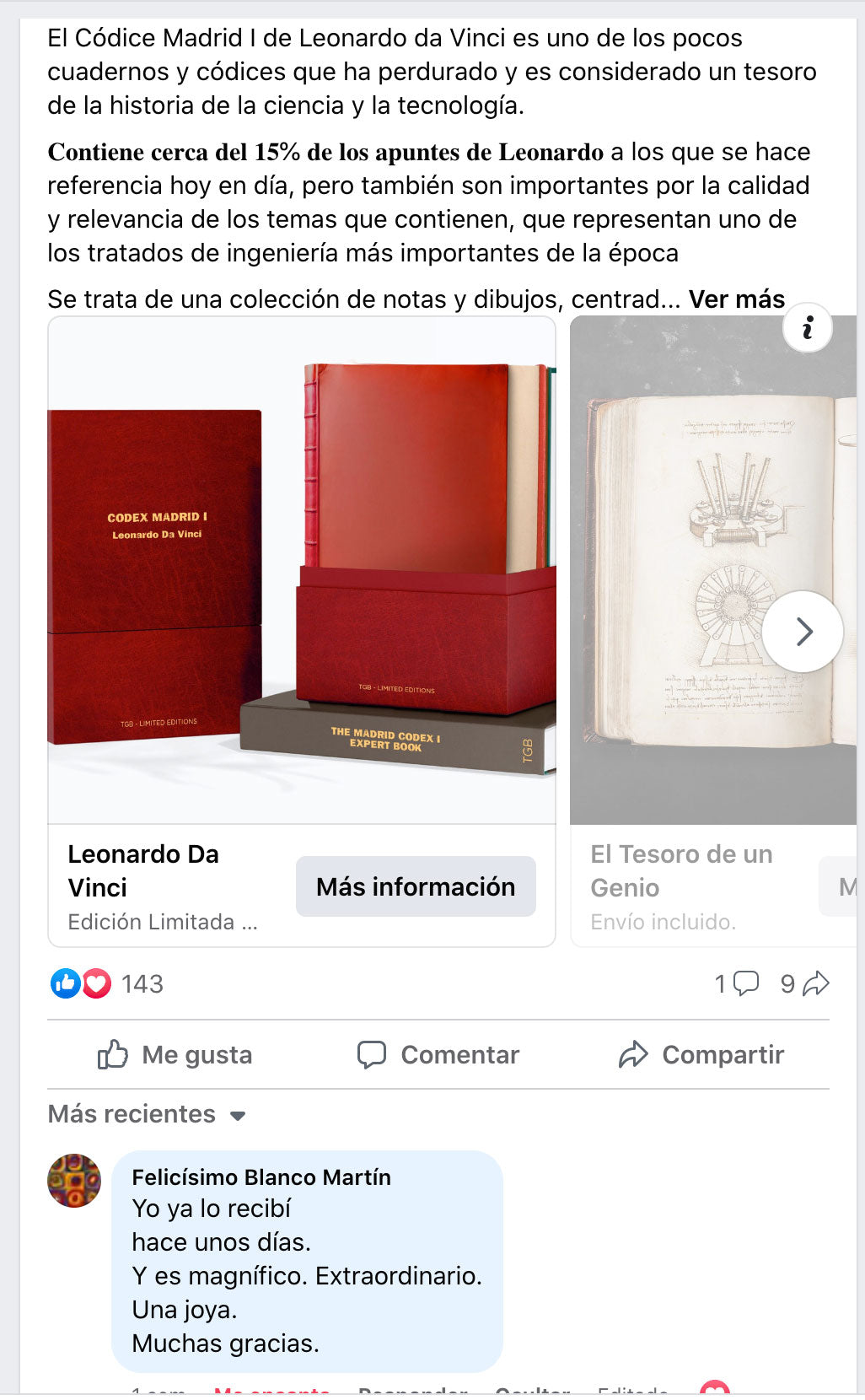
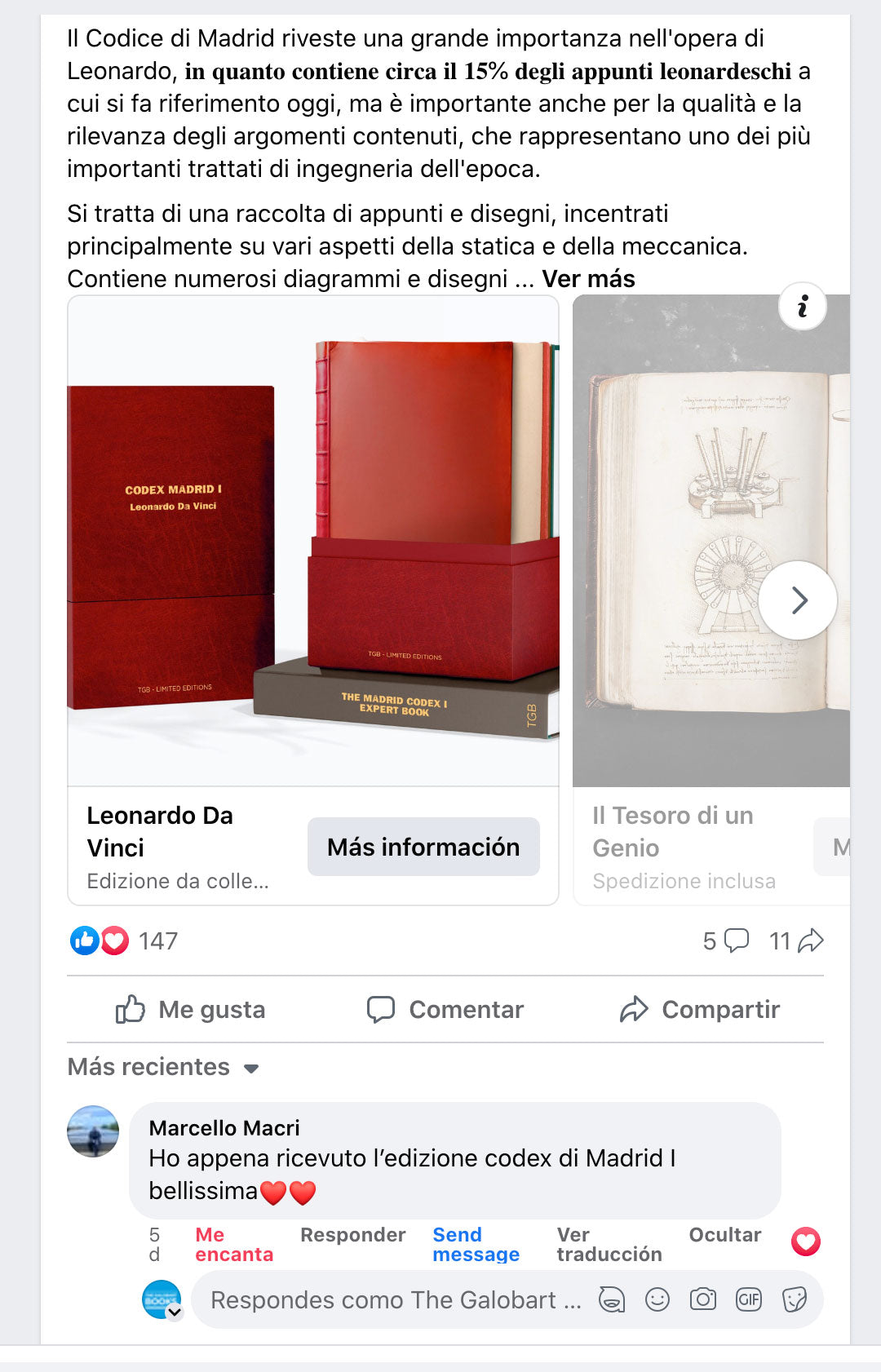
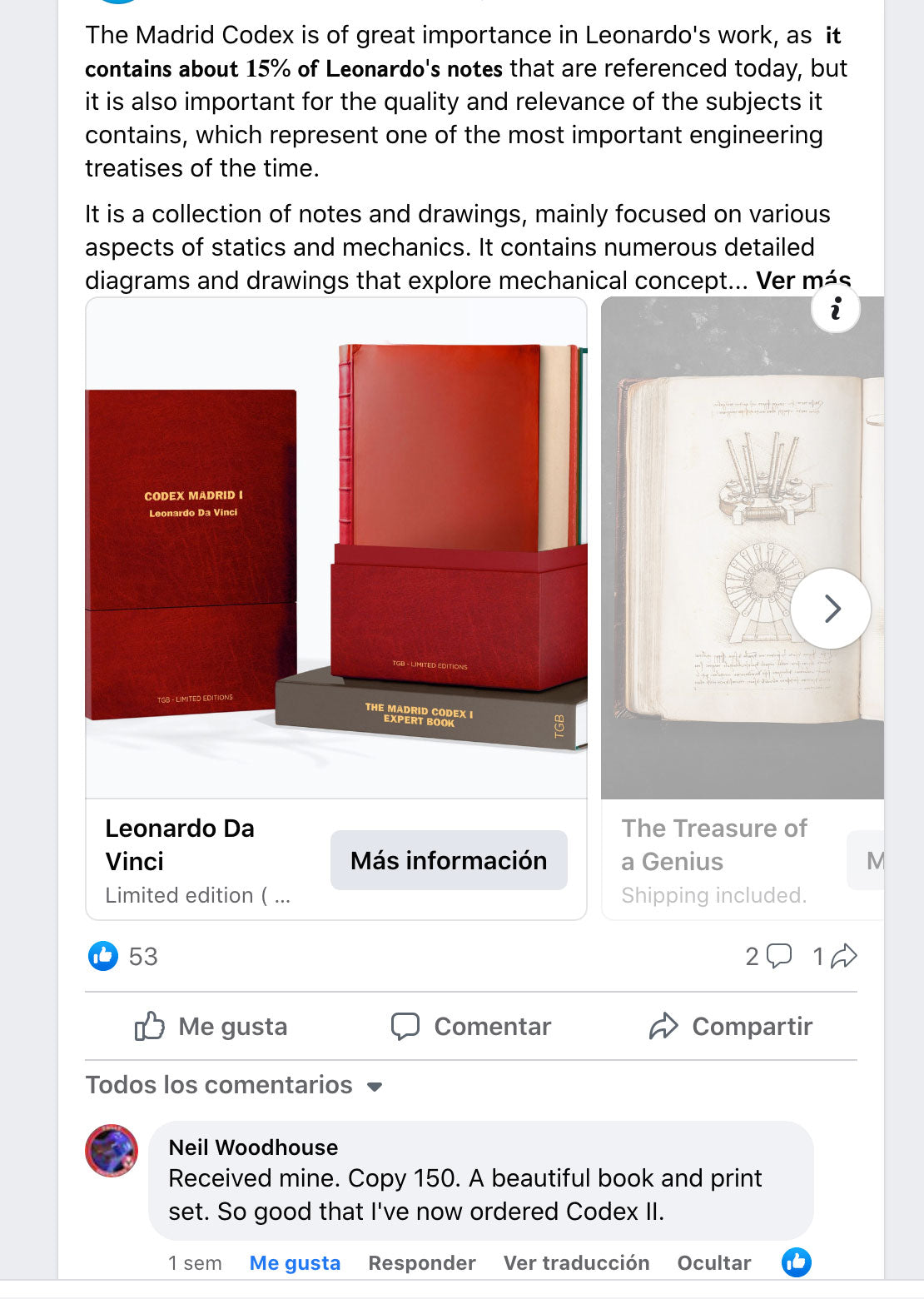
What is included?
*A FACSIMILE EDITION OF THE ORIGINAL
"Treatise on Statics and Mechanics", 384 pages in its original format of 215 x 145 mm
Hand-bound with spine ribs.
(vegan alternative to leather)
Art paper with serrated edges that reproduces the original.
Exact reproduction of the original document (length, color and size)
*TEN PRINTS TO COLLECT OR FRAME
10 art prints on Favini Plus art paper are included for owning an exclusive private art collection featuring Leonardo da Vinci's handwritten notes.
*A COMPANION BOOKLET WITH EXPERT COMMENTARY ON THE CODEX AND THE LIFE AND WORK OF LEONARDO
Paperback book with flaps.
*AN ELEGANT FABRIC CASE
An elegant silk fabric case that opens in half, numbered 001 to 999

CONTACT US FOR ANY QUESTIONS
Others love it too...
-
300 YEARS BEFORE COLOR Velvet Royal Blue Edition. NEW.
Regular price €150,00Regular priceUnit price / per -
Masters Of Color - Collector's Edition
Regular price €130,00Regular priceUnit price / per -
The Voynich Manuscript
Regular price €150,00Regular priceUnit price / per -
The Dresden Codex
Regular price €160,00Regular priceUnit price / per -
Codex Leicester (Leonardo Da Vinci)
Regular price €170,00Regular priceUnit price / per -
Expedition to Thies
Regular price €50,00Regular priceUnit price / per -
Codex Gigas XXL
Regular price €1.000,00Regular priceUnit price / per
